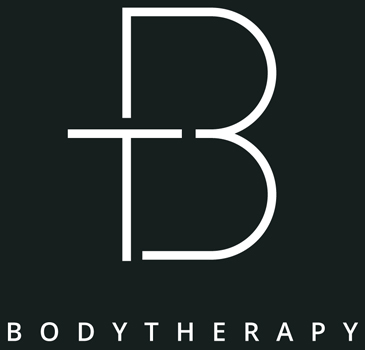Alright, let’s talk recovery. We’ve heard it all before: “no pain, no gain”, but in 2025, it’s all about “no pain, all gain”. Welcome to the era of next-level recovery methods where ice baths, compression garments, and active recovery are doing the heavy lifting – so you don’t have to. Gone are the days of just popping a few ibuprofen and hoping for the best. It’s time to embrace a new world of recovery that’s cooler, comfier, and dare I say – more fun.
-
Cold Plunges: Chill Out, Literally
Look, we get it. Jumping into freezing water sounds like a form of torture. But in 2025, cold plunges are no longer just for the hardcore athletes or those weird people who think ice baths are “fun”. Turns out, plunging into icy water actually helps to reduce muscle soreness, inflammation, and speeds up recovery.
In fact, studies show that cold immersion reduces the build-up of lactic acid (that nasty stuff that makes your muscles sore and cramp), so you can say goodbye to the “leg day” limp. If you’re worried about the cold, just think of it as a spa day…with a side of adrenaline. Plus, nothing says “I’m an athlete” like casually stepping into a freezing tub like you do it every day. Bonus: you might just develop some superhuman resilience while you’re at it.
-
Compression Garments: Like a Hug, But for Your Muscles
Compression garments are the cosy, snug, and stylish option for those who want to recover without breaking a sweat. These high-tech socks, sleeves, and leggings are designed to squeeze the life back into your tired muscles. No, seriously. Compression boosts blood flow, reduces swelling, and helps clear out waste products from muscle tissue.
It’s basically like having a personal masseuse who never gets tired of working on you. Wear them after a workout, while you binge-watch your favourite show, or even while you’re at the supermarket looking like an athlete on the go. You might get a few curious glances, but hey, you’re in recovery mode, not a fashion show. You do you.
-
Active Recovery: Move It or Lose It
Think recovery is just about sitting around doing nothing? Think again. In 2025, active recovery is the way to go. It’s not about pushing your body to the limit; it’s about giving it the TLC it deserves while staying active. This could be as simple as taking a walk, going for a light swim, or busting out some yoga stretches.
Why does this work? When you engage in low-intensity activities, you increase blood flow to your muscles, which helps to remove toxins (hello, lactic acid) and deliver oxygen to your cells for repair. Studies have shown that active recovery helps reduce muscle soreness and improves flexibility. So, yes, even those gentle movements count as “working out”. You’re not being lazy, you’re just “actively recovering”. Fancy, right?
-
Foam Rolling: The OG Recovery Tool
Let’s not forget about the classic: foam rolling. The humble foam roller is still going strong in 2025, and for good reason. Not only does it feel like you’re punishing yourself in the best way possible, but it also breaks down muscle tension and helps improve your flexibility. Science has your back here: research shows that foam rolling increases blood flow to muscles, helps with pain relief, and reduces soreness.
While it might feel like you’re giving your body a DIY soft tissue massage (spoiler alert: it may hurt), it’s a cheap and effective way to speed up your recovery. So, next time you’re on the floor crying while rolling out your quads, remember – it’s for the greater good.
-
Sleep: The Secret Recovery Weapon You’ve Been Neglecting
Okay, this one isn’t exactly a “trend” but hear me out. Sleep is the OG recovery method, and in 2025, we’re finally starting to realise just how much we need it. Research shows that proper sleep boosts muscle recovery, restores energy levels, and even improves cognitive function. If you’ve been skimping on sleep, it’s time to re-think your priorities.
Forget about all the trendy gadgets for a second. The most effective recovery tool you have is the one you’re using every night. So, in 2025, let’s make sleep the trend it’s always been – because let’s face it, you’re never going to fully recover on 4 hours of sleep, not matter how many compression socks you wear.
Conclusion: Recovery is Cool, and Sometimes…Literally
So, there you have it. From chilling in an ice bath like a champion to getting a snug hug from compression garments, recovery in 2025 is all about making your muscles feel like royalty. Whether you’re cold plunging, foam rolling, or just catching up on some much-needed sleep, there’s no shortage of methods to help you bounce back better than ever. Just remember, recovery isn’t a luxury; it’s a necessity. Treat your body like the finely-tunes machine it is – and it’ll reward you with less soreness and more gains.
References:
- American College of Sports Medicine. (2024). Cold Water Immersion and Recovery from Exercise: A Systematic Review.
- Journal of Strength and Conditioning. (2023). The Effectiveness of Compression Garments in Recovery and Performance: A Meta-Analysis.
- Journal of Sports Science and Medicine. (2023). Cryotherapy: A Comprehensive Review of Its Effectiveness in Recovery.
- Frontiers in Physiology. (2024). Foam Rolling: A Review of Its Impact on Muscle Recovery and Performance.
- National Sleep Foundation. (2024). The Role of Sleep in Muscle Recovery: What We Know So Far.
Photo by Yann Allegre on Unsplash

